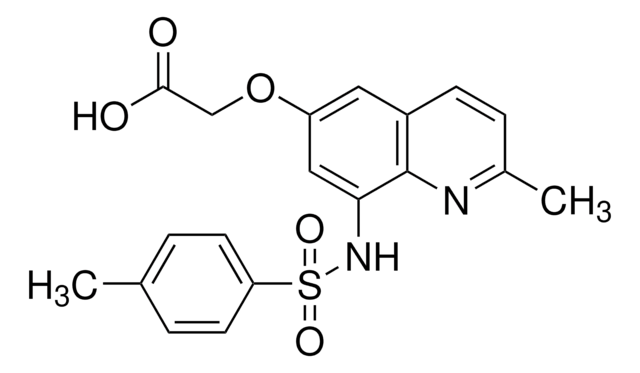MAK032
Zinc Assay Kit
sufficient for 100 colorimetric tests
About This Item
Produits recommandés
Utilisation
sufficient for 100 colorimetric tests
Application(s)
cosmetics
food and beverages
Méthode de détection
colorimetric
Maladie(s) pertinente(s)
cancer; genitourinary disorders; immunological diseases; neurological disorders
Température de stockage
2-8°C
Description générale
The Zinc Assay kit provides a simple and direct procedure for measuring zinc in a variety of samples, including serum, plasma, urine, or cerebral spinal fluid (CSF). Zinc ions bind to a ligand, which results in a colorimetric (560 nm) product proportional to the amount of zinc present.
Adéquation
Principe
Remplacé(e)(s) par
Mention d'avertissement
Danger
Mentions de danger
Conseils de prudence
Classification des risques
Aquatic Chronic 2 - Eye Dam. 1 - Skin Corr. 1A - STOT SE 3
Organes cibles
Respiratory system
Code de la classe de stockage
8B - Non-combustible corrosive hazardous materials
Point d'éclair (°F)
Not applicable
Point d'éclair (°C)
Not applicable
Certificats d'analyse (COA)
Recherchez un Certificats d'analyse (COA) en saisissant le numéro de lot du produit. Les numéros de lot figurent sur l'étiquette du produit après les mots "Lot" ou "Batch".
Déjà en possession de ce produit ?
Retrouvez la documentation relative aux produits que vous avez récemment achetés dans la Bibliothèque de documents.
Les clients ont également consulté
Notre équipe de scientifiques dispose d'une expérience dans tous les secteurs de la recherche, notamment en sciences de la vie, science des matériaux, synthèse chimique, chromatographie, analyse et dans de nombreux autres domaines..
Contacter notre Service technique









